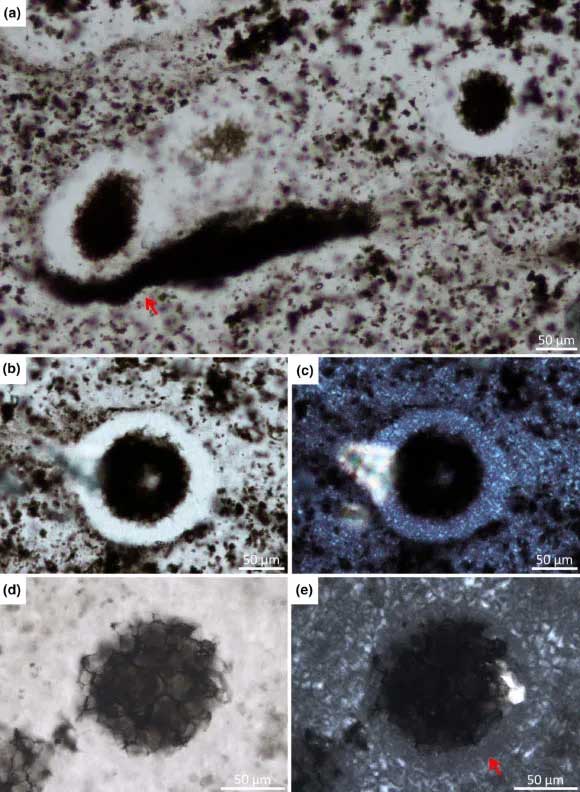The history of life on Earth may need to be revised following the discovery of microfossils that are remarkably complex, dating back to a period of significant environmental change.
According to Sci-News, approximately 2.4 billion years ago, the Great Oxygenation Event caused fundamental chemical changes to the Earth’s surface environment.
The impact of these changes on the biosphere remains unclear due to the lack of well-preserved fossils from this era. However, a recent find in the famous Turee Creek Group sedimentary area in Western Australia has come as a real shock.

Microfossils found in Western Australia.
According to Professor Erica Barlow from the University of New South Wales (Australia) and Penn State University (USA), what they discovered is the first direct evidence linking the changing environment during the Great Oxygenation Event with an increase in the complexity of life.
The Great Oxygenation Event caused mass extinctions while paving the way for more complex organisms to emerge. However, the “complexity” that scientists had envisioned was merely simple prokaryotic organisms.
The microfossils from Western Australia demonstrate the opposite: what was preserved in the sediments resembles algae more than simple prokaryotic organisms.
Algae, along with all other plant and animal species on our planet today, are eukaryotic organisms, a form of life more complex than what existed on primordial Earth, with nucleated cells and membranes.
They also share similarities with modern Volvocaceae, exhibiting astonishingly complex cell arrangements.
The discovery in Western Australia is groundbreaking, as it pushes back the record age of this type of “advanced” microfossil by 750 million years.
It serves as vivid evidence that Earth was capable of producing complex life much earlier than we previously thought.
This study, recently published in the journal Geobiology, is just the beginning.
Professor Christopher House from Penn State University, a co-author, noted that these newly discovered fossils are very well preserved, allowing for in-depth studies of their morphology, composition, and complexity.
Preliminary analyses of the chemical composition and carbon isotopes of these microfossils have confirmed that they are indeed biological fossils.
The specimens have provided deep insights into the habitats, reproduction, and metabolic processes of early microorganisms.





















































